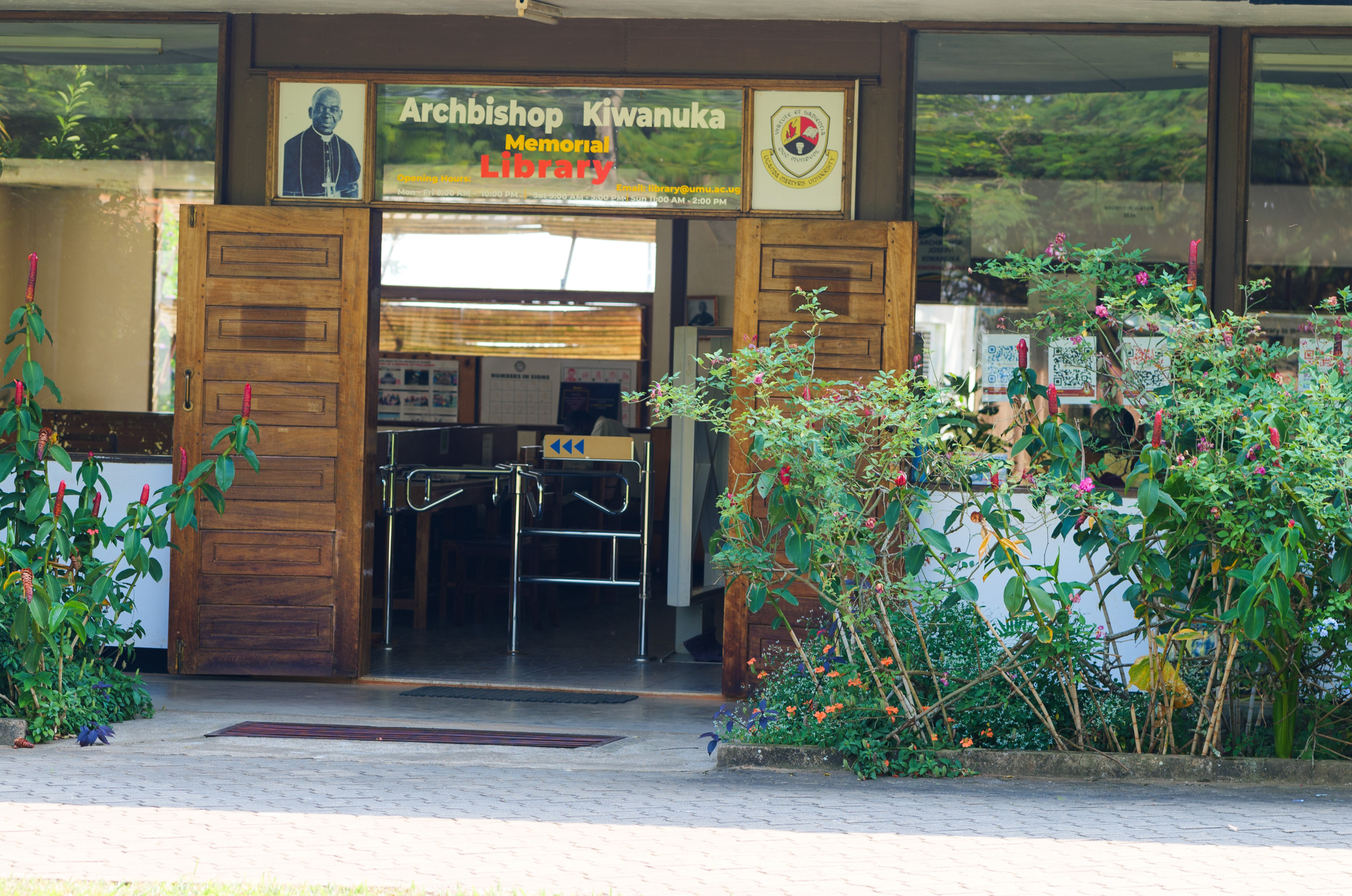UMU Institutional Repository
The Uganda Martyrs University Institutional Repository (UMU-IR) preserves research output from the Uganda Martyrs University community

Communities in DSpace
Select a community to browse its collections.
- Uganda Martyrs University book series and book chapters by staff and students
- Proceedings of conferences held at Uganda Martyrs University and conference presentations by students and staff outside the University
- «
- 1 (current)
- 2
- 3
- »
Recent Submissions
A linguistic approach to inclusivity of the deaf in web-based mainstream higher institutions of learning in Uganda: a case of Uganda Martyrs University
(Regional Universities Forum for Capacity Building in Agriculture (RUFORUM), 2024) Nakyejwe, Christine
This study was designed to investigate how effectively higher institutions of learning embraced inclusivity of the deaf and hard-of-hearing (DHH) in a web-based education in a heterogeneous teaching-learning environment but, from a linguistic perspective. This study investigated how higher institutions of learning where almost 100% of the students’ population had social media as their nearest companion during and after school – give school a wide interpretation to include all teaching-learning centers. However, this study focused on linguistic competence of the learners who were DHH to cope-up with the assigned academic tasks in higher institutions of learning for inclusivity in a web-based learning environment.
Law enforcement intelligence in Uganda
(Routledge, 2024) Muchwa, Asiimwe Solomon
This chapter examines law enforcement intelligence in Uganda. It starts with the premise that law enforcement intelligence is vital for the police to be effective and efficient in keeping law and order, but in Uganda, it is rather weak and not very obvious. The chapter presents a conceptual and analytic framework for law enforcement, disorder, and insecurity in Uganda. Thereafter, it examines and explains the challenges facing law enforcement intelligence in Uganda. It argues that the lack of clarity emanates from the conflated nature of the intelligence services in the country. This works against the police's ability to effectively deal with existing and future threats to law and order. The chapter also argues that the competing mandates of the intelligence providers in the country are the prime challenge, among others. It uses a qualitative methodology that combines historical/archival review and a combination of primary and secondary research into Ugandan intelligence services.
Environmental, Social, and Governance (ESG) investing: evolution, significance, challenges, and impacts
(IGI Global Scientific Publishing, 2024) Sirisha G. L.; Sukumar, Sneha; Iyer, Anusha; Nakitende, G. Marie
The world faces complex challenges, from climate change and resource depletion to social inequities and governance issues, affecting the environment, society, and the global economy. Recently, there has been significant growth in sustainable finance as more institutional investors and funds adopt environmental, social, and governance (ESG) investing. This trend is driven by a combination of factors, including a focus on long-term financial value and better alignment with ethical values. Investors today prioritize sustainability alongside profit, targeting companies that contribute to a better future. They recognize the long-term risks of social injustice, environmental degradation, and poor corporate governance. Additionally, younger generations influence investment patterns by emphasizing sustainability and social responsibility. Stakeholder and regulatory demands for business ethics also boost this momentum. This chapter provides an in-depth analysis of the evolution, significance, and impact of ESG investing on investors and organizations.
Green finance trends: a bibliometric review using the Scopus database
(IGI Global Scientific Publishing, 2024) Bist, Shrey; Tiwari, Rajesh; Taneja, Sanjay; Nakitende, G. Marie
Green finance plays a crucial role in promoting sustainable development by funding environmentally friendly projects and supporting the transition to a low-carbon economy. This study conducted a bibliometric analysis of 2,138 articles published from 1998 to 2021 to identify key themes and trends in green finance literature. The analysis included co-authorship network analysis, citation analysis, and topic modeling. Results show a significant increase in green finance research since 2015, with major contributions from China and the United States. Future research directions identified include examining green finance's impact on sustainable development and addressing social and environmental inequalities. This study offers valuable insights for stakeholders promoting sustainable development through green finance and guides scholars interested in this research area.
The silent noise in business management: people, finance, technology and customer issues
(Uganda Martyrs University Press, 2024) Mary Maurice Nalwoga Mukokoma (ed.)
The book serves as a beacon, igniting our inmate curiosity and fostering a continuous quest for knowledge that transcends generations. It sheds light on the concept of the "silent noise", those inconspicuous but persistent challenges that, if left unaddressed, have the potential to wreak havoc on an organisation, often evading detection by many.
These challenges, ranging from entrepreneurial alertness to talent management, demotivation, financial stewardship, customer satisfaction, and marketing are meticulously discussed in the pages of this work. By shining a spotlight on these oft-neglected areas, the book provides invaluable insights, urging readers to confront and conquer the silent noise before it amplifies into a cacophony, threatening the very foundation of their endeavours.
Entrepreneurial alertness, Talent management, Demotivation, Financial stewardship, Customer satisfaction, Marketing
